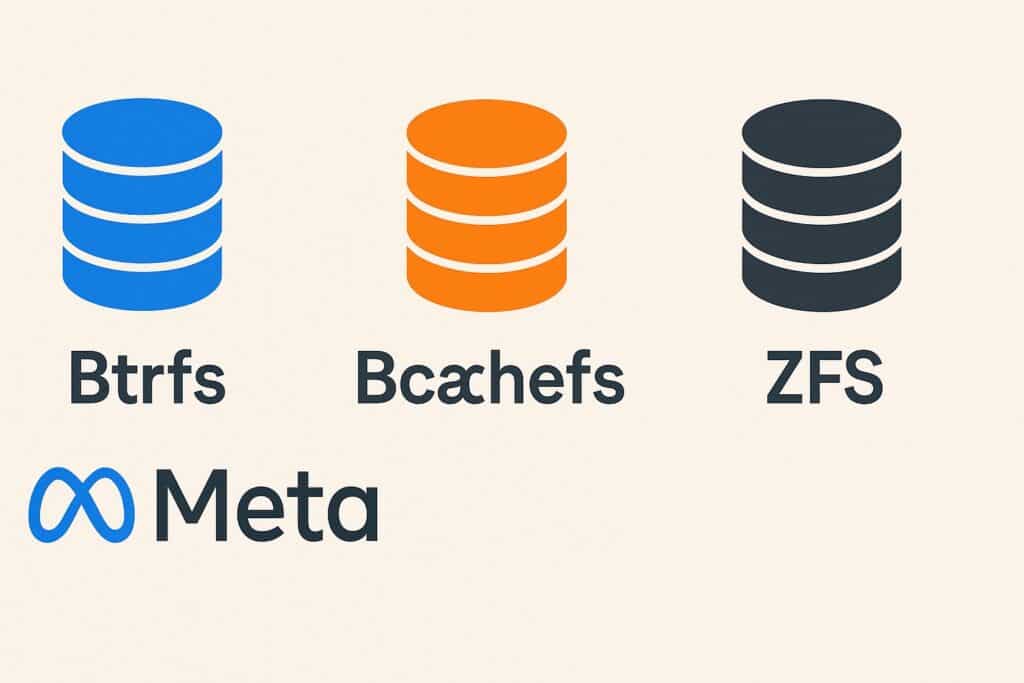Josef Bacik, a Btrfs engineer at Meta, has publicly defended the central role this file system plays in the company’s infrastructure. Speaking on the Linux kernel mailing list, Bacik stated that Meta’s entire infrastructure relies on Btrfs, and that its use has saved “billions of dollars” in infrastructure costs thanks to its features and robustness in massive production environments.
These statements came in response to Kent Overstreet, creator of Bcachefs, amid a heated dispute within the kernel community that could result in Bcachefs being removed from Linux starting with version 6.17. Bacik stressed that Btrfs “doesn’t need smear campaigns against other systems” because its adoption is based on tangible results.
Btrfs in large-scale production
Meta uses Btrfs to manage its global fleet of servers running containerized services distributed around the world. The company takes advantage of features such as:
- Copy-on-write (COW) to protect data integrity.
- Instant snapshots to create immutable runtime environments in milliseconds.
- Native compression to reduce the amount of data written and extend SSD lifespan.
- Send/receive to replicate and distribute container images at scale.
- Asynchronous discard to eliminate latencies associated with SSD discard operations.
At the Open Source Summit 2023, Bacik explained that these capabilities have enabled faster deployments, lower storage costs, and greater platform resilience. Meta, together with SUSE, is one of the main contributors to Btrfs development, which explains its deep integration and optimization.
Comparison: Btrfs, Bcachefs and ZFS
Despite Bacik’s defense, Btrfs operates in a landscape where other advanced file systems compete. Three of them —Btrfs, Bcachefs, and ZFS— share the philosophy of integrating high-level features directly into the file system, but differ in maturity, licensing, and real-world capabilities.
| Feature | Btrfs (Linux mainline) | Bcachefs (Linux mainline since 6.7) | ZFS (OpenZFS, CDDL) |
|---|---|---|---|
| Status | Stable for production (except RAID 5/6) | Experimental, initial kernel support | Very mature, widely used in critical environments |
| License | GPLv2 (in Linux) | GPLv2 (in Linux) | CDDL (cannot be included directly in Linux) |
| COW | Yes | Yes | Yes |
| Snapshots | Native, instantaneous | Native | Native |
| Compression | LZO, zlib, zstd | zstd | LZ4, gzip, zstd, etc. |
| Deduplication | Yes, inline and offline | Not yet stable | Yes, offline |
| RAID | 0/1/10 stable, 5/6 experimental | Planned, not mature | RAID-Z, RAID-Z2, RAID-Z3 |
| Linux integration | Full, no external modules | Full | Requires DKMS module |
| Production maturity | High (Meta, SUSE, Synology) | Very low, few real-world deployments | High (FreeBSD, TrueNAS, enterprise servers) |
Btrfs offers a balance between native Linux integration and advanced features, but draws criticism for lower performance in certain workloads and the instability of RAID 5/6.
Bcachefs aims to combine “the best of both worlds” between Btrfs and XFS, with a modern design and focus on performance, but still lacks maturity and widespread adoption.
ZFS is the most established in critical environments, with robust, advanced data protection features, but its CDDL license prevents direct kernel inclusion, requiring it to be used as an external module.
Criticism and realities
Btrfs detractors point out that its raw performance is inferior to EXT4 or XFS, and that its advanced RAID features are not yet production-ready. Supporters counter that it is the only general-purpose option in the kernel that combines snapshots, compression, deduplication, and COW without external dependencies.
Bacik noted that its adoption at Meta results from technical and business decisions, not marketing campaigns. “The proof is in the results,” he said in his message to the kernel list.
The immediate future
While Btrfs continues to gain ground in companies and Linux distributions, the future of Bcachefs is uncertain due to internal disputes and its short production history. ZFS remains a leader in certain niches, but its limited integration in Linux makes it less attractive than native options.
What is clear is that competition between these systems drives continuous improvement — and, as Meta’s case shows, the choice depends as much on technology as on the ability to integrate it into large-scale operations.
Frequently Asked Questions (FAQ)
Is Btrfs production-ready?
Yes, as long as experimental features like RAID 5/6 are avoided. Companies such as Meta and SUSE use it at scale.
Why isn’t ZFS included directly in Linux?
Because its CDDL license is incompatible with the Linux kernel’s GPLv2.
Is Bcachefs a real alternative today?
Not yet. While promising, its adoption is minimal and it is still in the early stages of mainline support.
What advantage does Btrfs have over ZFS and Bcachefs?
Its native integration into Linux, with no external dependencies, and a proven balance of advanced features and stability in real-world deployments.


